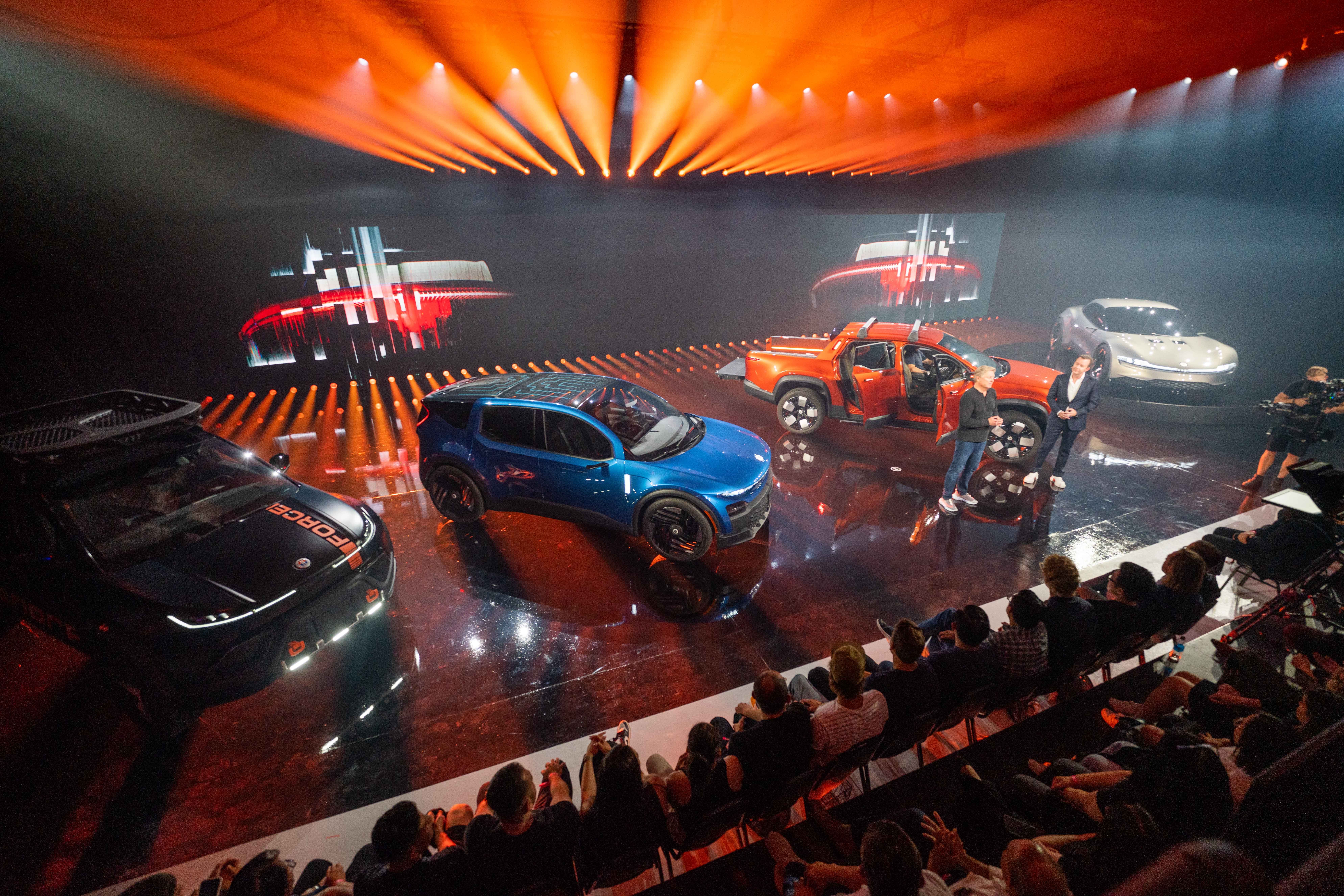Fisker showed off its vision for a sustainable, all-electric vehicle lineup through 2026, with three new cars accompanying the already-known Ocean. The company revealed the Ronin, PEAR, and Alaska, all of which fall into different vehicle categories and are designed to appeal to different buyers. The company also unveiled its Fisker Blade central computing platform and announced that the PEAR would be the first model to use it.For the sports car enthusiast, the Ronin is probably the most exciting car Fisker revealed. It's an all-wheel drive GT convertible powertrain with 1,000hp. It's clearly targeted at competing with the Tesla Model S, though its looks harken back to 2012's Fisker Karma. It'll accelerate to 60 mph from a stationary start in two seconds, which is a lot of torque. Perhaps even more impressive is the range, with the company looking to get 600 miles per charge. The company didn't announce a price or launch window for the Ronin, but we expect it won't be cheap.While power is a crucial selling point for the Ronin, it's also worth noting that the company is calling this an actual five-seat GT. Sports cars are not known for their roomy back seats. However, it sounds like a promising vehicle if the Ronin can offer a comfortable experience for a driver and four passengers while still throwing out 1,000hp.Fisker also revealed the Alaska, an all-electric, four-door pickup truck. This one is expected to launch in 2025 with a starting price of $45,400 before any tax incentives. The company is looking to offer between 230 and 340 miles on a charge with its capable truck. It's meant to be the world's lightest EV pickup truck, though it doesn't have much competition for that title right now.
The PEAR (Personal Electric Automotive Revolution) is the company's most affordable electric vehicle, coming in at under $30,000 for its most affordable trim (there are four trim levels total). It's not slated to hit the market until 2025, so anyone looking to get the six-seat small car will have to have some patience. Interestingly, Fisker says that its PEAR will use 35 per cent fewer parts than other EVs in its class, which sounds like a good thing for the environment.
Unfortunately, the company didn't reveal any information about the range of the PEAR. That's a huge determining factor for many when considering an EV, so we'd like to know that key detail.
Fisker also announced Force E, a dynamic and durable off-road package for the Fisker Ocean SUV. While the Ocean is a known quantity at this point, the Force E package is an excellent upgrade for those looking to take the car off-roading.
Finally, Fisker mentioned its Fisker Blade central computing platform, though it didn't provide many details other than saying the PEAR would be the first car to have it. The company also said Blade is "a central computing platform that will greatly reduce complexity in forthcoming vehicles." It sounds like it's designed to make using the systems and menus in the vehicles less cumbersome, but we'll need to see it in action to assess that.
For those interested in getting a Fisker EV, reservations for the Ronin and Alaska are underway. It's important to note that Fisker intends to build its cars in the US to be eligible for the EV tax credits.

